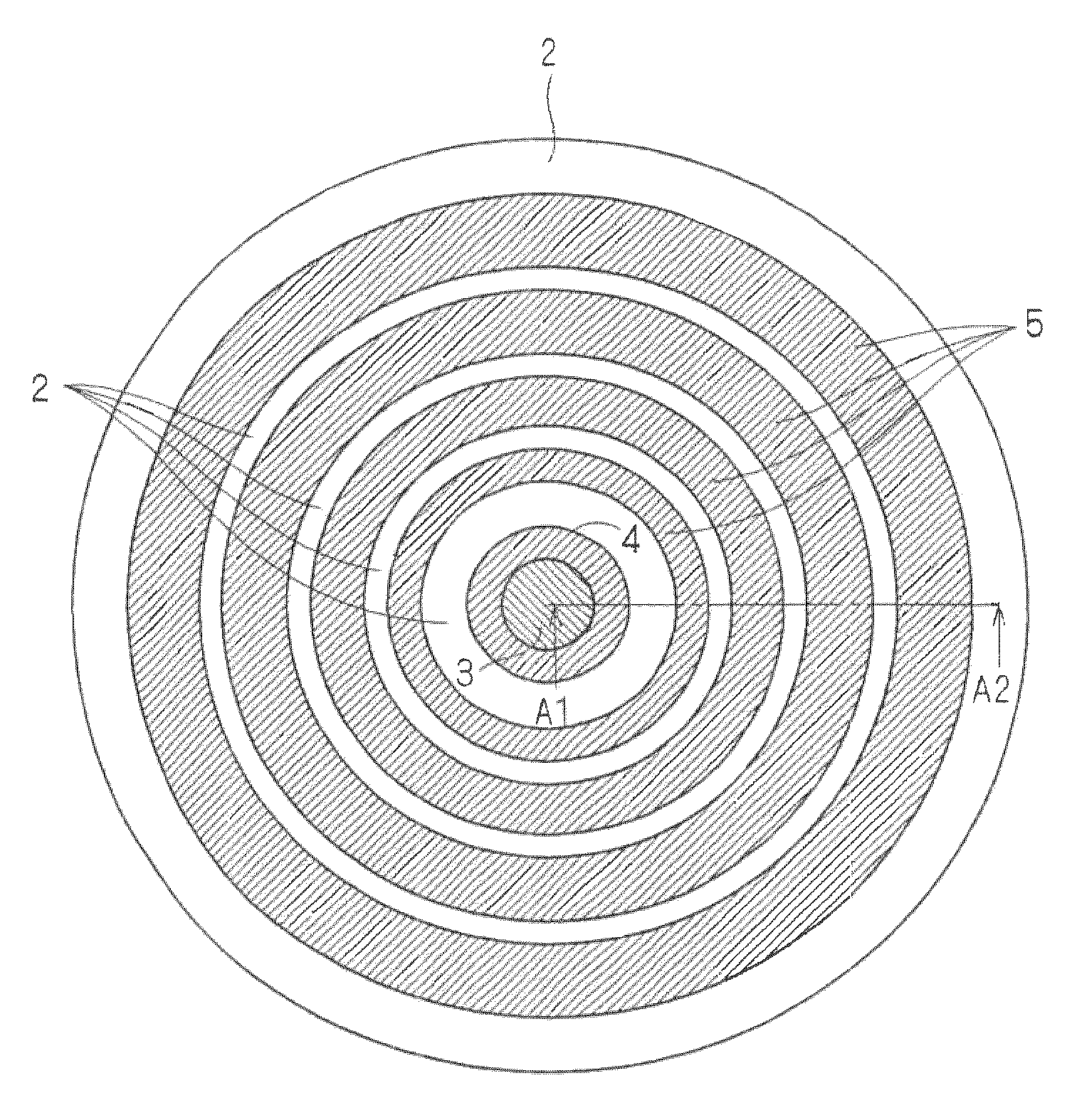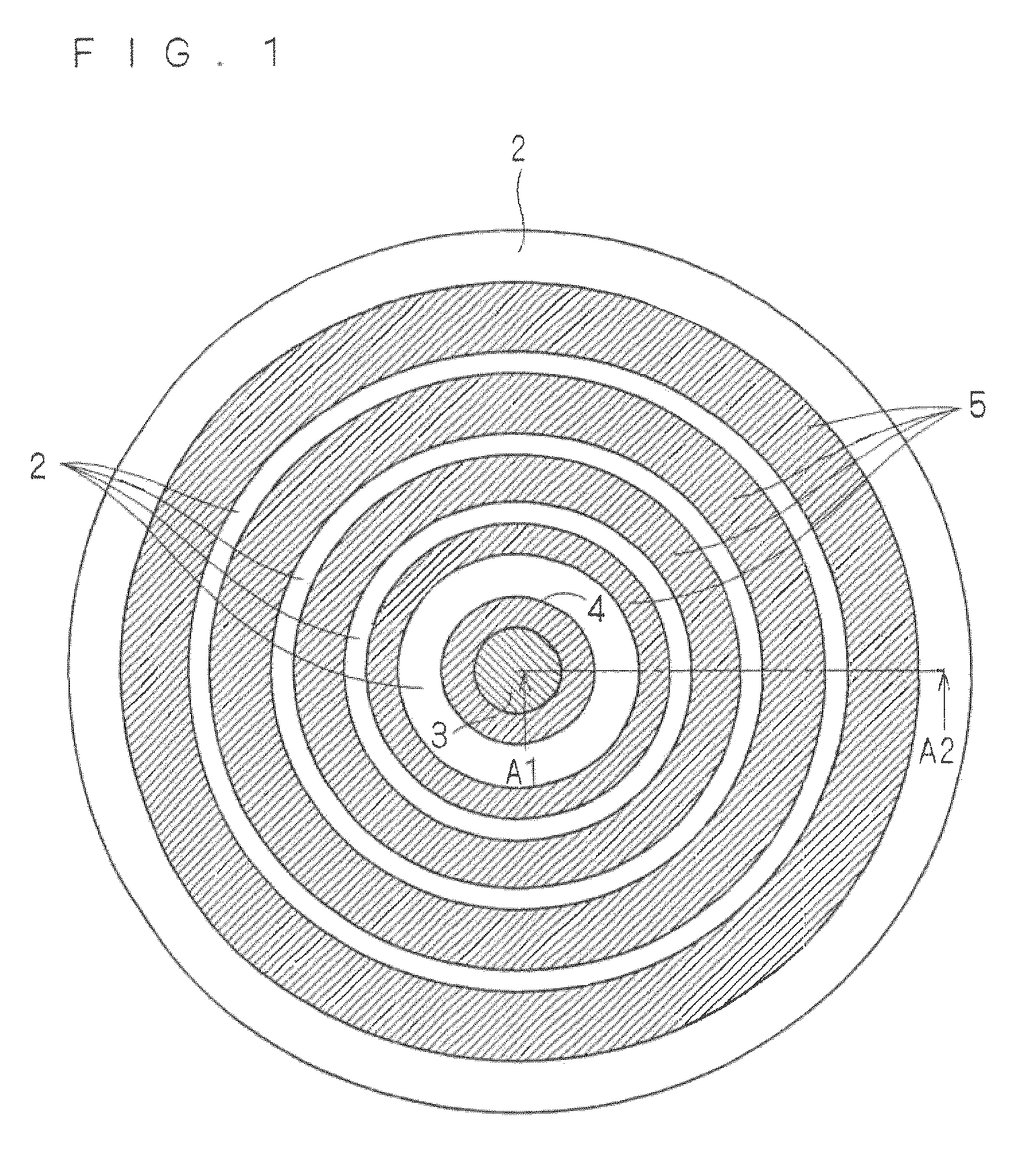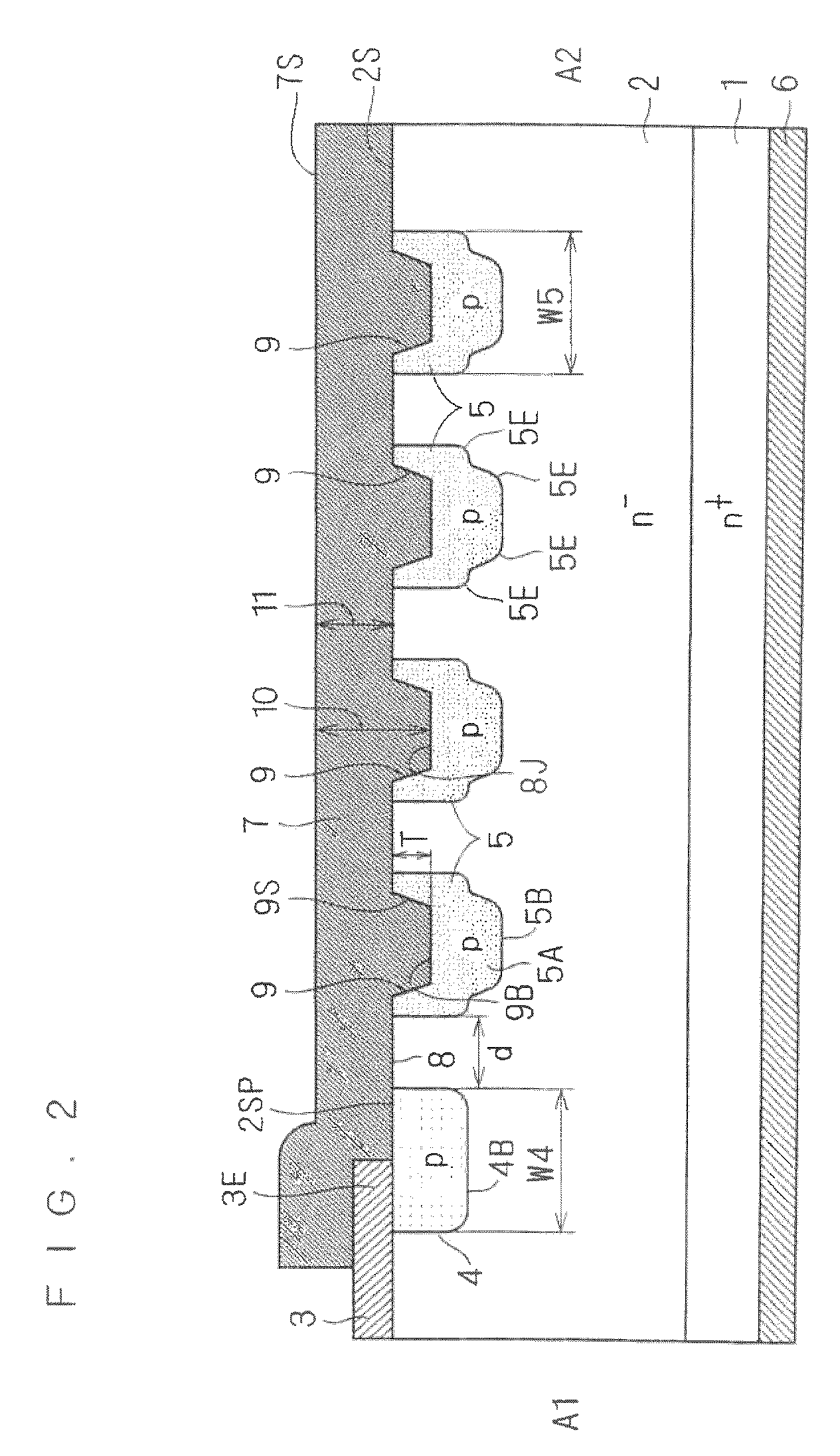Semiconductor device having a groove and a junction termination extension layer surrounding a guard ring layer
a technology of junction termination and extension layer, which is applied in the direction of semiconductor devices, semiconductor/solid-state device details, electrical equipment, etc., can solve the problem of significant degradation of break-down voltag
- Summary
- Abstract
- Description
- Claims
- Application Information
AI Technical Summary
Benefits of technology
Problems solved by technology
Method used
Image
Examples
first embodiment
[0021
[0022]In the present embodiment, as an example of a semiconductor device according to the present invention, the structure of a Schottky barrier diode and a method of manufacturing the same will be described.
[0023]FIG. 1 is a top view showing the semiconductor device according to the present embodiment. Further, FIG. 2 is a vertical cross-sectional view taken along a line A1-A2 of the top view of FIG. 1. Hereinafter, each cross-sectional view of the semiconductor device described in the present embodiment is assumed to be the vertical cross-sectional view taken along the line A1-A2 of the top view of FIG. 1 of the semiconductor device. Note that for the sake of convenience, an insulating film 7 and grooves 9 disposed correspondingly to respective JTE layers 5, which are shown in FIG. 2, are not shown in FIG. 1.
[0024]The termination structure of the Schottky barrier diode shown in FIG. 2 includes: (1) an n− type semiconductor layer (corresponding to a first conductivity type sem...
first modification
[0048
[0049]FIG. 4 is a vertical cross-sectional view showing a configuration of a semiconductor device according to a first modification of the first embodiment (FIG. 2). The semiconductor device shown in FIG. 4 is different from the semiconductor device shown in FIG. 2 only in that the JTE layer is not formed in the portion directly below the lateral surface 9S of each groove 9 but the JTE layer 5 is formed from the bottom 9B of each groove 9 toward an inside of the n− type semiconductor layer 2. The other structure is similar to the corresponding structure shown in FIG. 2, and detailed description of other reference symbols are omitted.
[0050]Also in the present modification, as in the first embodiment, the distance between the electric field concentration portion (corner portion) of each JTE layer 5 and the surface 2S of the n− type semiconductor layer 2 in which the grooves 9 are not formed is larger than that of the structure of the conventional example shown in FIG. 9. Accordin...
second modification
[0051
[0052]FIG. 5 is a vertical cross-sectional view showing a configuration of a semiconductor device according to a second modification of the first embodiment (FIG. 2). The semiconductor device shown in FIG. 5 is different from the semiconductor device shown in FIG. 2 only in that a depth TP, from the surface 2S of the n− type semiconductor layer 2, of a bottom of a groove 9P among a plurality of grooves 9 that is positioned at the farthest position from or on the outermost side from the GR layer 4 is the largest among the depths T of the bottoms of the other grooves 9a, 9b and 9c (TP>T). Note that other structure is the same as the corresponding structure of the semiconductor device of FIG. 2, and thus the above-mentioned effect produced in the first embodiment is obtained similarly in the present embodiment.
[0053]In the respective JTE layers 5, thicknesses from the bottom of the corresponding groove 9 to the bottoms 5B and 5BP of the respective JTE layers are set to be the same...
PUM
 Login to View More
Login to View More Abstract
Description
Claims
Application Information
 Login to View More
Login to View More - R&D
- Intellectual Property
- Life Sciences
- Materials
- Tech Scout
- Unparalleled Data Quality
- Higher Quality Content
- 60% Fewer Hallucinations
Browse by: Latest US Patents, China's latest patents, Technical Efficacy Thesaurus, Application Domain, Technology Topic, Popular Technical Reports.
© 2025 PatSnap. All rights reserved.Legal|Privacy policy|Modern Slavery Act Transparency Statement|Sitemap|About US| Contact US: help@patsnap.com



